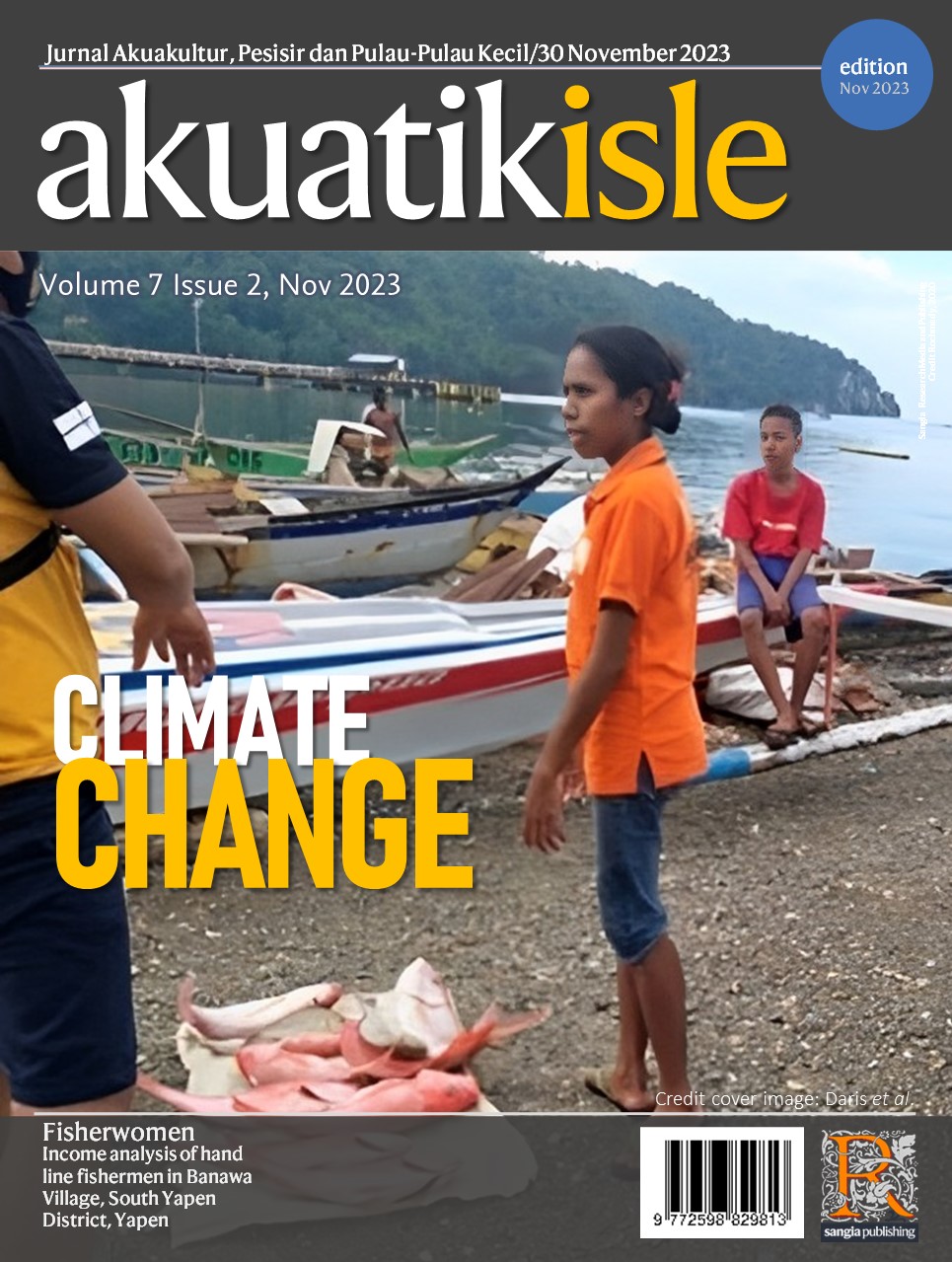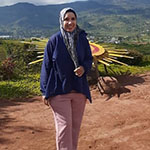Akuatikisle: Jurnal Akuakultur, Pesisir dan Pulau-Pulau Kecil
Full Length Article
A study of water depth on the growth and productivity of seaweed Kappaphycus alvarezii
Highlights
Generate NLP AI by Wizdam ID.
Abstract
This study aims to investigate the impact of varying the depth of water on the growth and productivity of seaweed Kappaphycus alvarezii. The study was carried out in the seas of Pallette. The research methodology used in this study incorporates three different planting depth treatments, specifically 1.5 meters, 3 meters, and 4 meters. In each treatment, 50 grams of Kappaphycus alvarezii seeds per bunch were used. The findings of this study indicate that seaweed cultivation at a depth of 1.5 m yields significantly favourable outcomes compared to the treatments conducted at depths of 3 m and 4 m, where growth is comparatively less optimal. This occurrence can be attributed to the diminished level of light penetration at such a depth. There is an inverse relationship between the depth of seaweed planting and the rate of weight gain. The optimal depth for seaweed cultivation for 42 days is 1.5 meters, with an average specific growth rate of 3% daily. On the contrary, the treatment carried out at a depth of 1.5 m showed the most substantial increase in biomass, averaging 122 g. Additionally, the maximum yield of seaweed was observed in the same treatment, precisely measuring 1,208 g/m2.
Keywords
Introduction
Section snippets
Material and Methods
Materials and methods from the full-text PDF of this article cannot be displayed.
Results
Results from the full-text PDF of this article cannot be displayed.
Discussion
Discussion from the full-text PDF of this article cannot be displayed.
Conclusions
Conclusions from the full-text PDF of this article cannot be displayed.
Acknowledgment
Acknowledgment from the full-text PDF of this article cannot be displayed.
Competing interest
The authors declare that they have no known competing financial interests or personal relationships that could have appeared to influence the work reported in this paper.
Conflict of interest
The authors declare that the research was conducted in the absence of any commercial or financial relationships that could be construed as a potential conflict of interest.
Ethical approval acknowledgements
No ethical approval required for this article. All procedures followed were in accordance with the ethical standards of the responsible committee on human experimentation (institutional and national) and with the Helsinki Declaration of 1975, as revised in 2008 (5)
Supplementary files
Data sharing not applicable to this article as no datasets were generated or analysed during the current study, and/or contains supplementary material, which is available to authorized users.
Bibliographic Information
Cite this article as:
-
Submitted
14 August 2023 -
Accepted
30 August 2023 -
Published
31 August 2023 -
Version of record
3 January 2024 -
Issue date
30 November 2023
-
Academic subject
Aquaculture
Copyright
Copyright © 2023 Muhammad Kasnir, Syarifuddin, Khairun Nisaa. Sangia Research Media and Publishing. Production and hosting by Sangia (SRM™).  This work is licensed under a Creative Commons Attribution-ShareAlike 4.0 International License.
This work is licensed under a Creative Commons Attribution-ShareAlike 4.0 International License.
Disclaimer: All claims expressed in this article are solely those of the authors and do not necessarily represent those of their affiliated organizations, or those of the publisher, the editors and the reviewers. Any product that may be evaluated in this article or claim that may be made by its manufacturer is not guaranteed or endorsed by the publisher.
Comments on this article
By submitting a comment you agree to abide by our Terms and Community Guidelines. If you find something abusive or that does not comply with our terms or guidelines please flag it as inappropriate.



